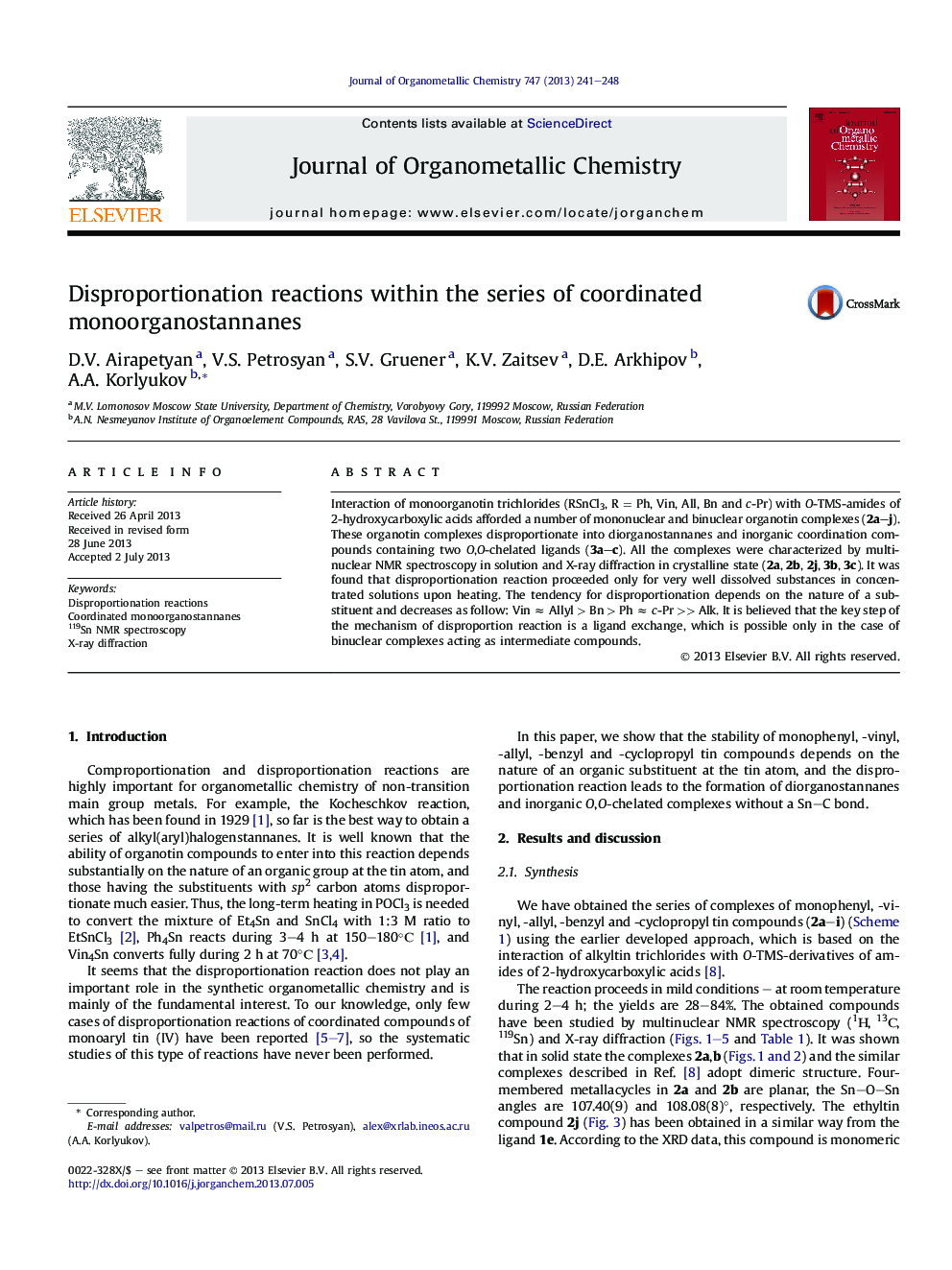| Article ID | Journal | Published Year | Pages | File Type |
|---|---|---|---|---|
| 1323696 | Journal of Organometallic Chemistry | 2013 | 8 Pages |
•Mononuclear and binuclear organotin complexes were prepared.•Disproportionation reaction leads to the formation of diorganostannanes.•Disproportionation reaction leads to the formation of inorganic complexes of tin.•Disproportionation reaction proceeded only for very well dissolved substances.•The tendency for disproportionation depends on the nature of a substituent at the tin atom.
Interaction of monoorganotin trichlorides (RSnCl3, R = Ph, Vin, All, Bn and c-Pr) with O-TMS-amides of 2-hydroxycarboxylic acids afforded a number of mononuclear and binuclear organotin complexes (2a–j). These organotin complexes disproportionate into diorganostannanes and inorganic coordination compounds containing two O,O-chelated ligands (3a–c). All the complexes were characterized by multinuclear NMR spectroscopy in solution and X-ray diffraction in crystalline state (2a, 2b, 2j, 3b, 3c). It was found that disproportionation reaction proceeded only for very well dissolved substances in concentrated solutions upon heating. The tendency for disproportionation depends on the nature of a substituent and decreases as follow: Vin ≈ Allyl > Bn > Ph ≈ c-Pr >> Alk. It is believed that the key step of the mechanism of disproportion reaction is a ligand exchange, which is possible only in the case of binuclear complexes acting as intermediate compounds.
Graphical abstractInteraction of monoorganotin trichlorides with O-TMS-amides of 2-hydroxycarboxylic acids afforded a number of mononuclear and binuclear organotin complexes. It has been shown that the coordination compounds of monoorganotin, depending on the substituent at the tin atom, had the tendency for the disproportionation reaction, giving diorganostannanes and inorganic coordination compounds as its products.Figure optionsDownload full-size imageDownload as PowerPoint slide
